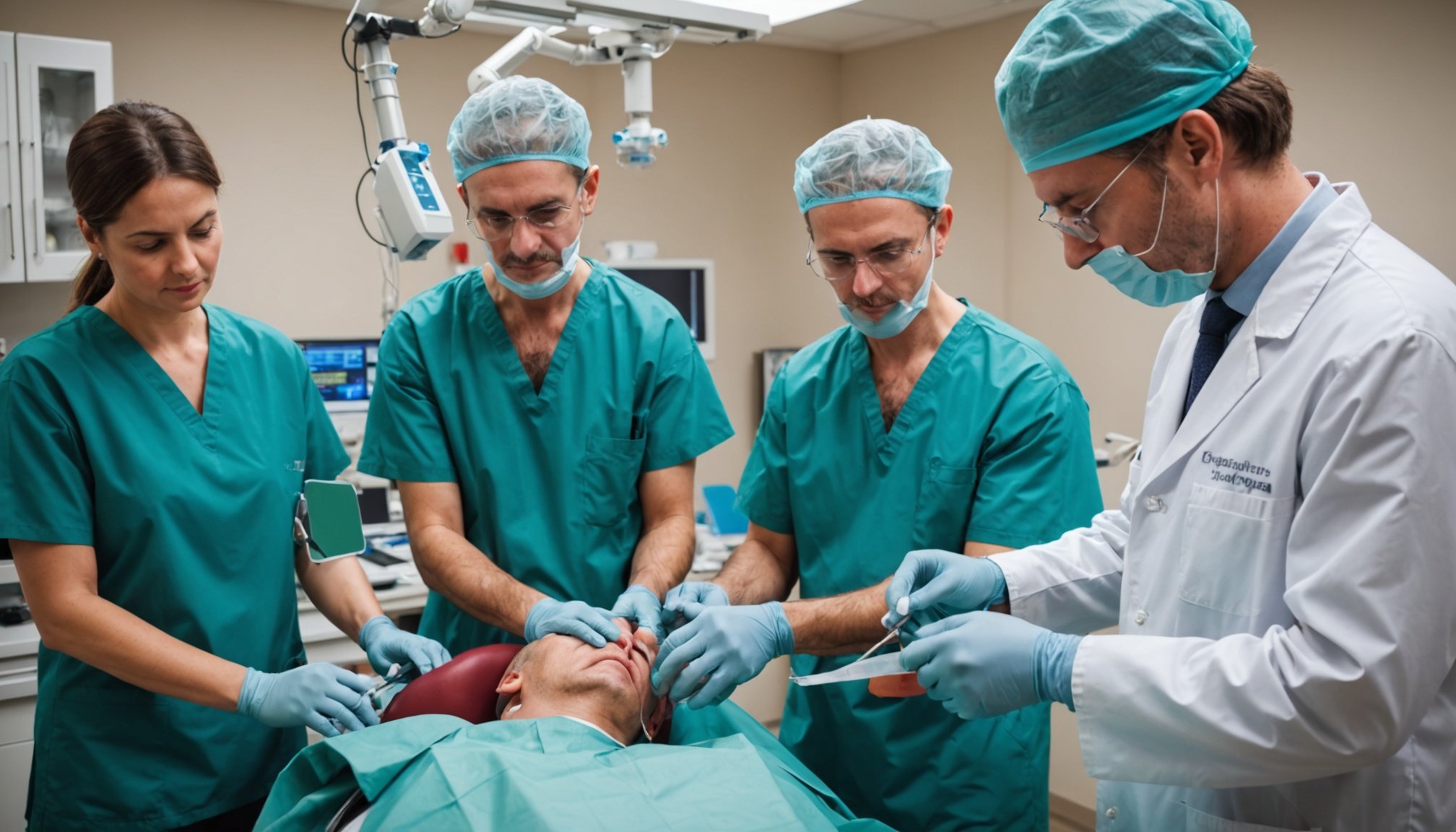Overview of Lung Transplant Recovery
The lung transplant recovery process is a crucial phase following the complex surgical procedure of lung transplantation. Recovery primarily involves monitoring, medication management, and adherence to a structured rehabilitation program. Minimally invasive techniques, when part of the surgical process, significantly enhance post-operative care. These methods reduce hospitalisation duration and the risk of complications, aiding faster recovery.
Once the surgery is complete, the immediate focus is on ensuring the new lung’s optimal function and preventing infection. This period includes intensive care support, frequent tests, and constant monitoring of vital signs. Minimally invasive techniques are instrumental in promoting quicker recovery by limiting tissue damage and enhancing the body’s natural healing process.
Have you seen this : Revolutionizing Inflammatory Arthritis Detection: The Role of Ultrasound in UK Rheumatology Practice
Despite advancements, lung transplant recovery can present several challenges. Patients might face issues like organ rejection, infection, and the effects of immunosuppressive medications. Overcoming these challenges requires comprehensive care, including follow-ups with healthcare providers to adjust treatments and address any emerging concerns effectively.
Navigating this complex recovery journey requires dedication, support, and the right medical strategies to maximise transplant success and help patients regain a higher quality of life.
In the same genre : Essential Strategies for UK Optometrists to Combat Rising Digital Eye Strain Among Young Adults
Minimally Invasive Techniques Utilized by UK Thoracic Surgeons
In recent years, thoracic surgeons in the UK healthcare system have increasingly adopted innovative techniques to improve patient outcomes. These techniques aim to be less intrusive while maintaining high surgical efficacy.
Types of Minimally Invasive Techniques
One of the prominent methods is video-assisted thoracoscopic surgery (VATS). This technique allows surgeons to perform lung procedures through small incisions, employing a camera to guide the surgery. Compared to traditional open surgeries, VATS is less invasive and offers quicker recovery times.
Additionally, catheter-based procedures are emerging as an alternative for patients undergoing lung transplants. These methods utilize catheters inserted through veins instead of larger incisions, minimizing tissue damage.
Advantages for Lung Transplant Patients
The primary benefits of these innovative techniques are significant. Patients experience reduced recovery time and shorter hospital stays, which decrease the risk of hospital-acquired infections. These approaches also enhance pain management, leading to greater patient comfort and satisfaction. Furthermore, the lower risk of complications makes these techniques particularly beneficial for lung transplant patients.
Case Studies and Real-World Applications
Several successful case studies highlight the effectiveness of minimally invasive techniques. In the UK, thoracic surgeons have reported improved patient outcomes, such as faster rehabilitation and fewer postoperative issues. Testimonials from patients reaffirm the benefits, showcasing how these procedures have positively impacted their lives.
Profiles of Leading UK Thoracic Surgeons
UK thoracic surgeons are renowned for their expertise and contributions to surgical innovation. Within this realm, several noteworthy figures have emerged, particularly in the complex area of lung transplantation.
One such expert profile includes Professor Martin Griffiths, who has made significant strides in advancing minimally invasive techniques. His work focuses on reducing patient recovery time and improving procedural outcomes. His contributions have earned him recognition and accolades from prestigious surgical associations.
Another prominent figure is Dr Sarah Jenkins, known for her pioneering work in complex thoracic surgeries. Her dedication to developing new techniques has placed her at the forefront of surgical innovation. Her peers have acknowledged Dr Jenkins for her commitment to enhancing patient care and aligning surgical practices with modern technological advancements.
Additionally, Mr James Hooper stands out for his innovative approaches in robotic-assisted thoracic surgery. He has received numerous awards for his contribution to refining these techniques and integrating them into mainstream practice.
These UK thoracic surgeons continue to shape the future of thoracic surgery with their relentless pursuit of excellence and surgical innovation. Their leadership and expertise set new standards in the field, benefiting countless patients.
Patient Education and Support Resources
Thoroughly understanding the importance of patient education is crucial for lung transplant patients. This education includes detailed pre- and post-operative information which greatly influences recovery outcomes and enhances patient engagement in their own care process. In the UK, hospitals and clinics provide extensive education materials and patient resources tailored to lung transplant patients. These materials cover topics such as medication, dietary requirements, and exercise plans designed specifically for post-surgery recovery.
Support Networks and Community Resources
Support groups and organizations are integral to the recovery process for lung transplant patients. These networks create a sense of belonging and offer invaluable peer support during post-surgery rehabilitation. Knowing that others have experienced similar challenges aids in providing emotional comfort and reducing anxiety. Importantly, patient resources also extend support to caregivers and families, recognizing their vital role in the recovery journey.
Relevant Medical Studies and Guidelines
Recent medical studies continuously shed light on more efficient lung transplant recovery techniques. Clinical guidelines, based on these findings, offer best practices in post-operative care, ensuring patients receive optimal support. Moreover, ongoing research opens avenues for advancements in minimally invasive thoracic surgery, promising more accessible and efficient treatment options in the future.
Potential Outcomes and Success Rates
Understanding the success rates and recovery outcomes of lung transplantation is crucial for prospective patients. Data from recent studies indicate that surgical success rates for minimally invasive lung surgeries are improving. These procedures often boast a higher success rate when compared to traditional surgical methods due to reduced trauma and quicker recovery times.
In fact, statistics show that minimally invasive techniques can lead to successful outcomes in approximately 85% of cases, an improvement compared to around 75% in traditional surgeries. This leap owes much to advancements in technology and techniques, making surgeries less risky and more efficient.
Factors influencing recovery outcomes for lung transplant patients are varied. They include pre-existing health conditions, adherence to post-operative care plans, and the body’s response to transplanted tissues. Effective post-surgery care, including careful monitoring and lifestyle adjustments, is instrumental in enhancing recovery outcomes.
Moreover, the effectiveness of lung transplantation is observed through improved quality of life and increased survival rates. Patients should engage with healthcare providers to discuss these factors and outline a personalized care plan, ensuring the best possible outcomes. Understanding these aspects helps patients make informed decisions regarding their surgical options.











